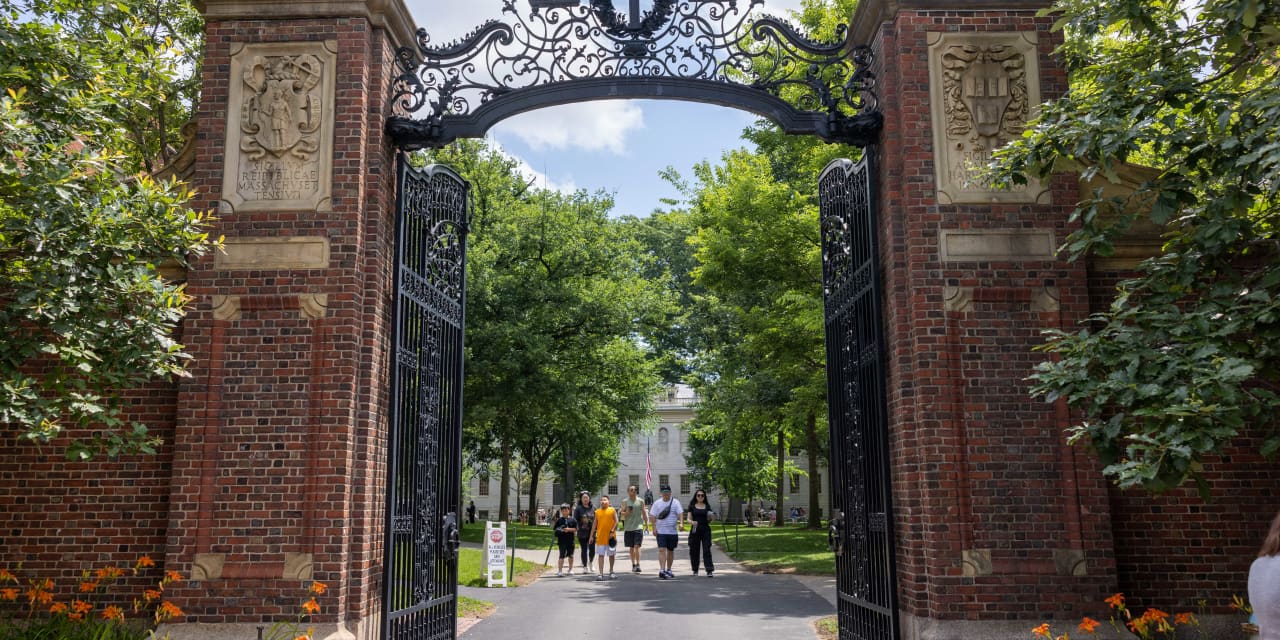Harvard University’s $50.7 billion endowment gained 2.9% in the last fiscal year as investments in private equity and venture capital dragged on its performance and those of some of its biggest rivals.
A number of schools—including Massachusetts Institute of Technology, Stanford University, and Columbia University—each reported that their endowment performance in the 12 months through June 30 was hurt by declining values in alternative investments. The largest college endowments use such investments to get better risk-adjusted returns using top outside managers.
“Strong public equity returns are often outpaced by private equity and venture capital,” Narv Narvekar, CEO of Harvard Management Co., which runs the endowment, wrote in a letter included in the school’s annual financial report published Thursday. “However, the returns for these asset classes proved to be only slightly positive in private equity and mildly negative in venture capital/growth.”
For the fiscal year ended June 30, Harvard’s endowment—the largest among U.S. universities—had only 11% of its assets in public equities, with 39% in private equity, and 31% in hedge funds.
Many university funds trailed behind the S&P 500 index, which gained 19.6% in the same period. The median return for endowments and foundations in the period was 7.6%, according to preliminary data from Cambridge Associates. Smaller funds had bigger gains because they tend to hold more stocks. Those with less than $500 million in assets gained a median 8.8%. The biggest funds—those with more than $500 million—returned 6.4%.
It was a reversal from fiscal 2022, when the largest endowments’ higher allocations to private equity, venture capital, and hedge funds cushioned them against the battered stock market. University endowments lost 8%, on average, in that fiscal year.
In his report last year, Harvard’s Narvekar warned that he was cautious about the future performance of the portfolio’s better-performing private equity and venture capital investments because they could be marked down as markets declined.
In Thursday’s report, he noted just that, saying private managers didn’t reduce the value of their investments in fiscal 2022 “in a manner that was consistent with declining public equity markets.”
That disparity continued in fiscal 2023, when managers then didn’t increase values as markets rose. As a result, “given the continued slowdown in exits and financing rounds over the last year, it will likely take more time for private valuations to fully reflect current market conditions,” he said.
Narvekar took over in December 2016, and has since revamped the endowment. In the past six fiscal years, Harvard has pivoted from private real estate and agriculture, and timber investments to private equity, he wrote. The endowment also created a portfolio of liquid uncorrelated funds within its hedge-fund allocation. “These decisions proved to be successful,” Narvekar said. The endowment has diversified into biotech, both in public and private markets, and “significantly added to tech venture,” he said.
Schools typically report their fiscal year returns each autumn. Columbia University’s $13.6 billion endowment gained 4.7%. Public markets and hedge funds helped boost the portfolio, while private asset holdings were “modestly negative,” Columbia Investment Management Co. President and CEO Kim Lew said in a release.
Stanford University’s $40.9 billion investment fund gained 4.4%. “Strong results in most asset classes during the past year were partially offset by losses in our venture capital and growth equity portfolios, continuing a correction that began in 2022,” Robert Wallace, CEO of Stanford Management Co. said in a release.
Yale University’s $40.7 billion endowment notched a 1.8% return. The so-called Yale model, developed by longtime Yale endowment leader David Swensen, who died in 2021, emphasized alternative assets like venture capital, private equity and hedge funds.
MIT’s $23.5 billion endowment declined 2.9%. “Retrenchment in the valuations of venture capital portfolio companies affected the performance,” according to the treasurer’s report. Duke University, which also is heavy in alternatives, recently reported a 1% decline in the value of its $11.6 billion endowment in the year ended in June.
Harvard’s Narvekar noted that the superior returns produced by its outside managers may eventually slow. The fund’s five-year annualized return is 9.1%, and 8.2% for 10 years. The S&P 500 gained 12.3% and 12.9%, respectively, in those periods. In Thursday’s financial report, Harvard officials wrote that the endowment’s 2.9% return is below the university’s long-term target return of 8%.
The endowment’s manager selection “has been very strong, greater than we would have anticipated,” he said. “Although we are confident that HMC will continue to do very well, it is hard to imagine that the next six years of alpha production can be as strong as the previous six years.”
Write to Mary Romano at [email protected]
Read the full article here













Leave a Reply